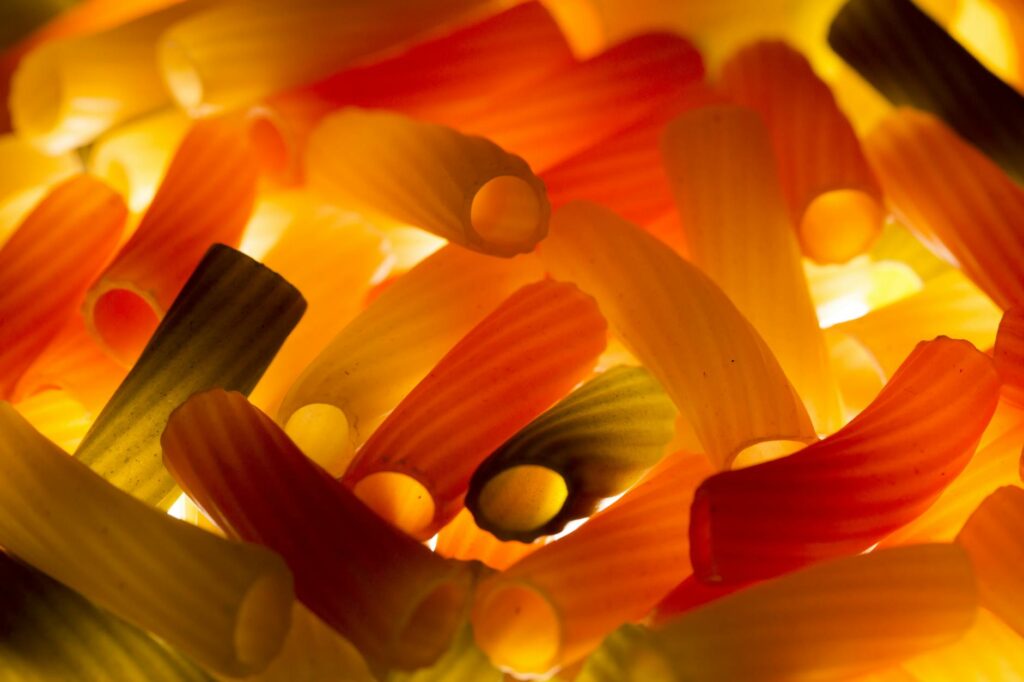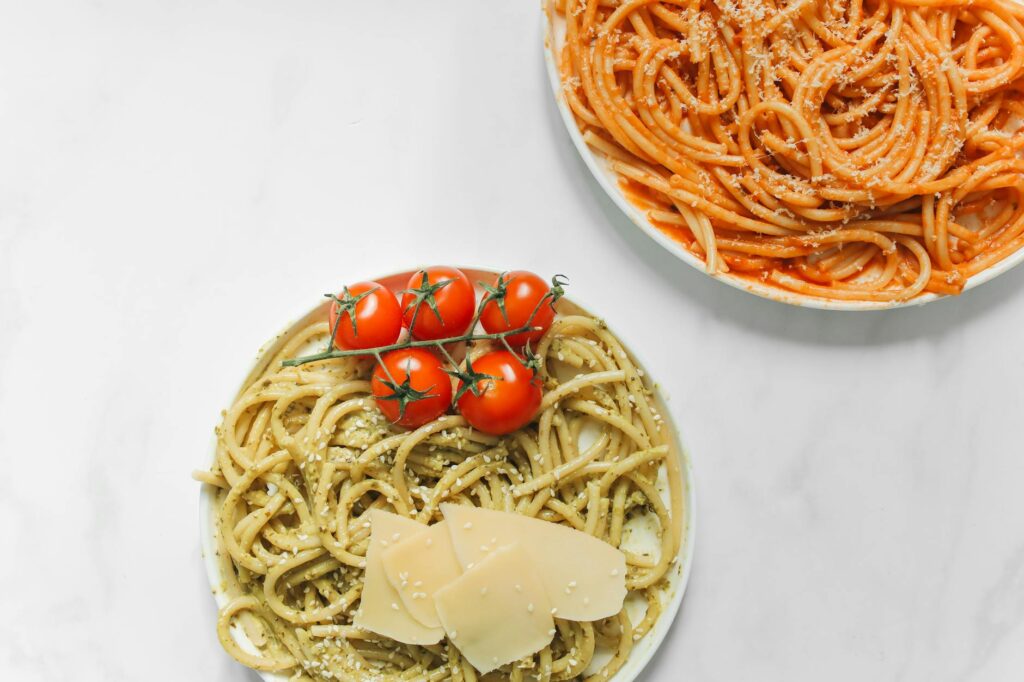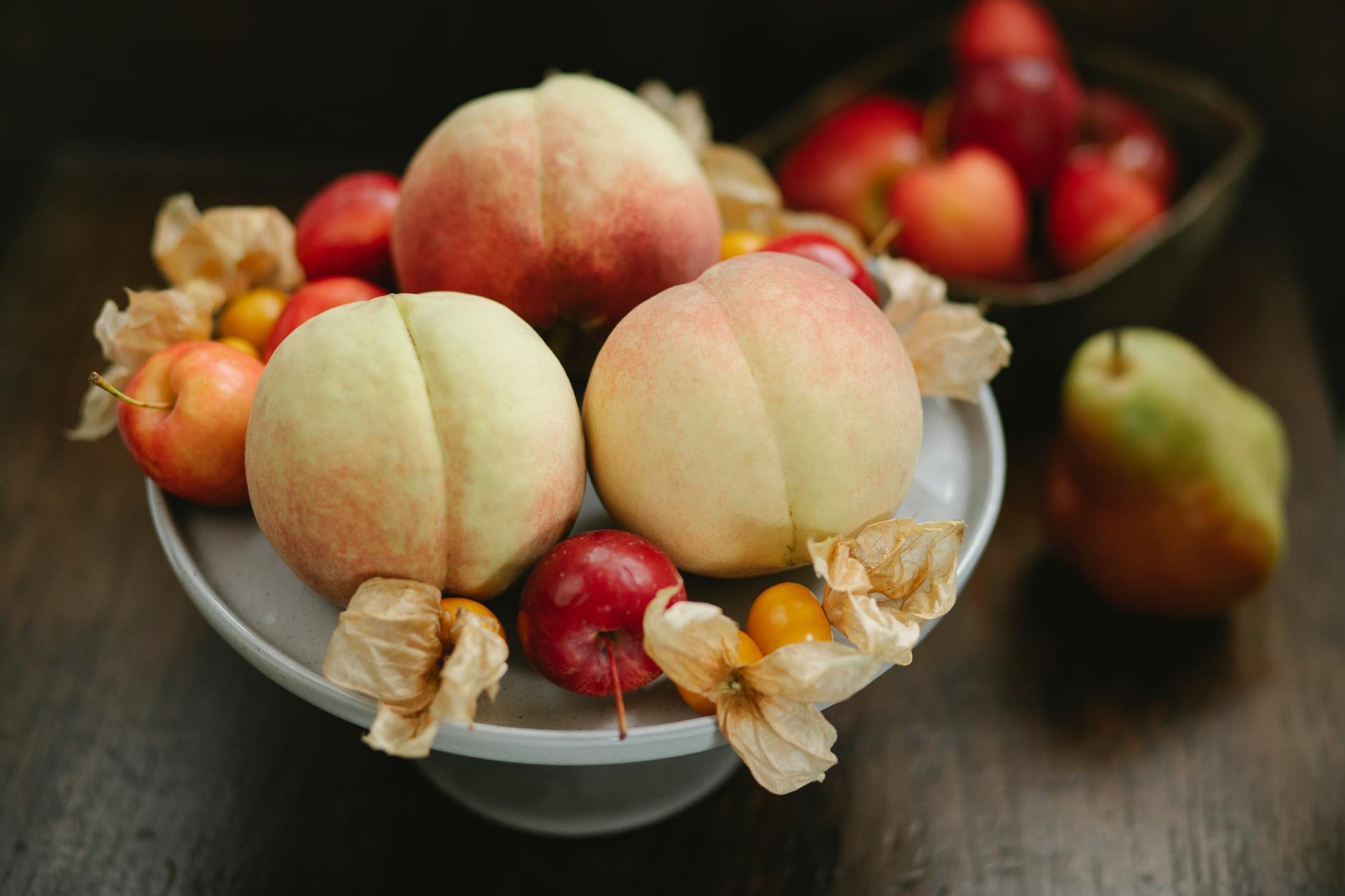Bucatini all’Amatriciana: a Roman classic that’s both simple and spectacular. This isn’t just pasta; it’s a celebration of Italy’s culinary heritage, a dish that sings with the flavors of sun-drenched tomatoes, salty guanciale, and intensely sharp Pecorino Romano cheese. Let’s dive into the heart of this timeless recipe.
The Soul of Amatriciana: Guanciale
Forget the pancetta! Authentic Amatriciana relies on guanciale, the cured jowl of the pig. Its unique texture and rich, savory flavor are essential to the dish’s character. Sourcing high-quality guanciale is key to unlocking the true essence of this Roman specialty. 
A Dance of Flavors: The Sauce
The sauce is where the magic happens. We start by rendering the guanciale until it’s crispy and golden – saving the rendered fat is crucial, as it provides incredible depth of flavor. Then, we add finely chopped onions, and slowly cook them in the guanciale fat until softened. Next comes the star: San Marzano tomatoes (or good quality canned tomatoes), simmered until they achieve a luscious, slightly thick consistency. A touch of red pepper flakes adds a subtle warmth. Remember, this sauce takes time to develop its full potential, so patience is rewarded! Learn more about selecting the perfect tomatoes.
The Pasta: Bucatini’s Perfect Bite
Bucatini, with its hollow, thick strands, is the ideal pasta for Amatriciana. Its unique shape perfectly captures the rich sauce, allowing every mouthful to be a burst of flavor.  Choosing the right pasta is another important element of this recipe. Our guide to choosing the best pasta can help you.
Choosing the right pasta is another important element of this recipe. Our guide to choosing the best pasta can help you.
The Finishing Touch: Pecorino Romano
No Amatriciana is complete without a generous grating of Pecorino Romano cheese. This sharp, salty, and slightly piquant cheese perfectly balances the richness of the guanciale and the sweetness of the tomatoes. [IMAGE_3_HERE] Add the cheese towards the end of cooking, allowing it to melt slightly into the hot pasta and create a beautiful creamy texture. Don’t forget a twist of fresh black pepper!
Beyond the Basics: Variations and Tips
While tradition is important, feel free to experiment! Some variations include adding a touch of white wine to the sauce or incorporating a small amount of fresh basil at the very end. Explore variations on this classic recipe to create your own signature Amatriciana. Mastering the cooking of the guanciale is paramount, make sure to follow instructions carefully, as this is the foundation of the dish.
A Roman Feast Awaits
Bucatini all’Amatriciana is more than just a meal; it’s an experience. The combination of textures and flavors – the crispy guanciale, the rich tomato sauce, the perfectly al dente bucatini, and the sharp Pecorino Romano – is simply unforgettable. So gather your ingredients, put on some Italian music, and prepare to be transported to the heart of Rome! [IMAGE_4_HERE]
Frequently Asked Questions
What kind of tomatoes are best for Amatriciana? San Marzano tomatoes are traditionally used for their sweetness and low acidity.
Can I substitute guanciale with pancetta or bacon? While possible, the flavor will be significantly different. Guanciale provides a unique richness that other cured meats can’t replicate.
How do I know when the pasta is cooked perfectly? Cook the bucatini al dente – slightly firm to the bite. It should still have a bit of a chew to it.
How long does the sauce need to simmer? The sauce should simmer for at least 20-30 minutes to allow the flavors to meld together.
Can I make this recipe ahead of time? The sauce can be made ahead of time and reheated, but it’s best to cook the pasta and combine everything just before serving for optimal texture.


